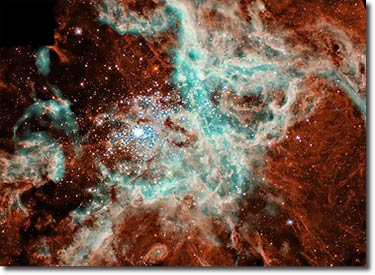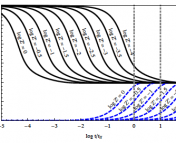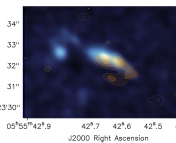In this series of posts, we sit down with a few of the keynote speakers of the 229th AAS meeting to learn more about them and their research. You can see a full schedule of their talks here!

“Stars are the atoms of the universe,” according to Prof. Chris McKee, who studies the formation of these important cosmic building blocks.
McKee is a professor emeritus of Astronomy and Physics at the University of California, Berkeley. He is this year’s Russell Prize Lecturer, awarded for a lifetime of eminence in astronomical research. His keynote lecture at #AAS229 is titled “How Stars Form.”
McKee was always interested in physics, but he only decided to specialize in astrophysics during graduate school while at UC Berkeley. He was inspired by his advisor, George Field, to begin his lifelong study of the interstellar medium (ISM). After earning his PhD, McKee eventually returned to Berkeley as a professor where he remains today. Among the many honors of his career, McKee co-chaired the 2000 Decadal Survey in astronomy and astrophysics and served as founding Director of the Theoretical Astrophysics Center at Berkeley. Using his expertise in fluid mechanics and theoretical physics, he has focused his recent efforts on the formation of stars from the diffuse ISM.
Many aspects of science have changed throughout McKee’s career. While his graduate work largely involved analytical theory, computational improvements have lead to the ability to implement powerful simulations. As McKee points out, “In a sense, the theorists are now becoming the observers, because the amount of data is huge.” Even the way scientists collaborate and interact has drastically shifted. McKee recalls that he often “just went over to their office and talked to [peers]” as a young assistant professor, but he now finds himself spending much of his day answering emails from international collaborators.
As you’ve probably guessed from its title, McKee’s talk will focus on the formation of stars. However, McKee will be highlighting how star formation ties together many subfields of astrophysics, including the nature of dark matter. McKee also emphasizes the importance of understanding these connections to young researchers, encouraging graduate students to “try to acquire a broad range of skills,” even if they are not directly useful for current projects.
To learn more about McKee’s work, check out his talk at 3:40 PM on Jan. 4th at #AAS229!





Trackbacks/Pingbacks